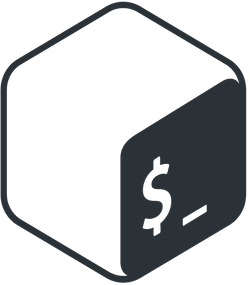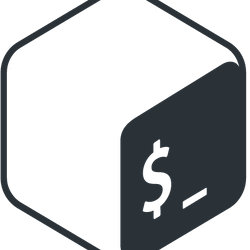
Have you ever been frustrated with a Linux file permission error and thought, “Let me just run chmod 777 and be done with it”? If so, you’re not alone. Many developers, system administrators, and even seasoned professionals have fallen into this trap. But here’s the thing – using chmod 777 is like leaving your house key under the doormat with a neon sign pointing to it.
In this comprehensive guide, we’ll explore why chmod 777 is considered one of the most dangerous commands in Linux, what risks it poses to your system, and what you should do instead. By the end of this article, you’ll understand why security experts cringe whenever they see those three sevens together.
Understanding Linux File Permissions: The Foundation
Before we dive into why chmod 777 is problematic, let’s establish a solid understanding of how Linux file permissions work. Think of file permissions as a bouncer at an exclusive club – they determine who gets in and what they can do once they’re inside.
What Are File Permissions?
Linux file permissions are a security mechanism that controls access to files and directories. Every file and directory in a Linux system has three types of permissions that can be granted or denied to different categories of users. These permissions form the backbone of Linux security, ensuring that sensitive files remain protected from unauthorized access.
The Three Permission Types
Linux recognizes three fundamental permission types:
- Read (r): Allows viewing the contents of a file or listing the contents of a directory
- Write (w): Permits modifying, creating, or deleting files and directories
- Execute (x): Enables running a file as a program or accessing a directory
User Categories in Linux
These permissions can be assigned to three distinct user categories:
- Owner (u): The user who owns the file
- Group (g): Users who belong to the same group as the file
- Others (o): Everyone else on the system
Decoding Chmod 777: What It Really Means
Now that we understand the basics, let’s break down what chmod 777 actually does to your files and directories.
Breaking Down the Numbers
The chmod command uses a three-digit octal notation where each digit represents permissions for owner, group, and others respectively. Each digit is calculated by adding values for read (4), write (2), and execute (1) permissions.
So when you see 777, here’s what’s happening:
- First
7: Owner gets read (4) + write (2) + execute (1) = 7 - Second
7: Group gets read (4) + write (2) + execute (1) = 7 - Third
7: Others get read (4) + write (2) + execute (1) = 7
Binary to Decimal Conversion
In binary terms, 777 translates to rwxrwxrwx, meaning every user category has full permissions. It’s essentially giving everyone a master key to your digital property.
The Dangerous Reality of Chmod 777
Here’s where things get scary. When you set a file or directory to chmod 777, you’re essentially rolling out the red carpet for anyone and everyone to do whatever they want with your files.
Complete Access for Everyone
The permission 777 means that any user on your operating system can modify, execute, and write to the files, posing a significant security risk to your system. This level of access is like giving a stranger the keys to your car, your house, and your bank account all at once.
Real-World Security Breach Examples
A recent case study highlighted in security forums shows how following AI advice to use chmod 777 led to a major system breach. The company asked AI what to do with a permission issue, and AI suggested setting it to chmod 777. This bash script was highly sensitive and controlled critical system functions. The result? Their servers were completely overtaken because the script could be executed by anyone with system access.
Major Security Risks of Using Chmod 777
Let’s examine the specific ways chmod 777 can compromise your system security.
Unauthorized File Modifications
When files have 777 permissions, any user can modify them without restriction. This opens the door to:
- Configuration tampering: Malicious users can alter system configurations
- Code injection: Attackers can inject malicious code into your applications
- Data corruption: Accidental or intentional file modifications can corrupt critical data
Malware and Code Injection
One of the most serious risks involves web servers. If you set chmod 777 on your /var/www directory, a malicious user could inject code that makes your web server output sensitive files like /etc/passwd. They could then use this information to identify system users and attempt brute-force attacks to gain deeper system access.
System Compromise Scenarios
Consider this scenario: An attacker gains limited access to your system through a web application vulnerability. Normally, their access would be restricted. However, if critical files have 777 permissions, they can:
- Escalate privileges by modifying system files
- Install backdoors for persistent access
- Steal sensitive data from unrestricted files
- Compromise other systems if your server is part of a network
Web Server Vulnerabilities
For web applications, chmod 777 is particularly dangerous. If a WordPress site has a vulnerability that allows arbitrary PHP code execution, and the WordPress files have 777 permissions, attackers can modify the core files to install malware, SEO spam kits, or drive-by exploit kits that harm visitors to your site.
How Chmod 777 Breaks System Functionality
Beyond security risks, chmod 777 can actually break your system’s functionality in unexpected ways.
Sudo Permission Issues
Many system administrators have discovered that changing everything to 777 breaks sudo functionality. This happens because sudo relies on specific permission structures to maintain security. When these permissions are compromised, sudo may refuse to work, forcing you to log in as root directly – which defeats the purpose of having sudo in the first place.
Driver and System Errors
Setting system-wide 777 permissions can cause:
- Driver failures: Device drivers may refuse to load with improper permissions
- Service startup errors: System services might fail to start
- Application crashes: Many applications check file permissions before running
One user reported that after trying chmod -R 777 on an Ubuntu system, the virtual machine became completely unusable.
The Principle of Least Privilege: A Better Approach
Instead of giving everyone access to everything, security professionals follow the principle of least privilege.
What Is Least Privilege?
The principle of least privilege states that users and processes should be given the minimum permissions necessary to perform their tasks. This approach minimizes potential damage if a security breach occurs.
Implementing Granular Permissions
Rather than using 777, consider these approaches:
- Analyze needs first: Determine exactly what permissions are required
- Use specific permissions: Grant only the necessary read, write, or execute permissions
- Implement group management: Use groups to manage permissions for multiple users
- Regular audits: Periodically review and adjust permissions as needed
Safe Alternatives to Chmod 777
Let’s explore secure alternatives that solve permission issues without compromising security.
Using Chmod 755 for Directories
For directories that need to be accessible but secure, chmod 755 is often appropriate. This gives:
- Owner: Read, write, execute (7)
- Group: Read, execute (5)
- Others: Read, execute (5)
This allows the owner full control while letting others access and read the directory contents without modification rights.
Using Chmod 644 for Files
For regular files, chmod 644 is typically sufficient:
- Owner: Read, write (6)
- Group: Read (4)
- Others: Read (4)
This prevents unauthorized modifications while allowing necessary read access.
Group-Based Permission Management
Instead of using 777, you can:
- Create specific groups for users who need access
- Set group ownership on files and directories
- Use
chmod 770to give full access to owner and group while excluding others - Use
chgrpto change group ownership as needed
Common Scenarios Where People Use Chmod 777
Understanding why people resort to chmod 777 helps us address the root problems more effectively.
Web Development Quick Fixes
Developers often encounter permission errors when:
- Uploading files through web interfaces
- Installing applications that need write access
- Debugging permission issues under time pressure
The temptation to “just make it work” with 777 is strong, but it’s like using duct tape to fix a broken engine – it might work temporarily, but it’s not addressing the real problem.
Shared Server Environments
In shared hosting or development environments, teams sometimes use chmod 777 because it seems to solve everyone’s access problems at once. However, this approach creates more problems than it solves, especially when multiple users are involved.
Best Practices for File Permission Management
Here are proven strategies for managing file permissions securely and effectively.
Regular Permission Audits
Implement regular checks to ensure permissions haven’t drifted from security standards:
- Automated scanning: Use tools to identify files with overly permissive settings
- Permission baselines: Establish standard permission sets for different file types
- Documentation: Keep records of why specific permissions were set
Using Access Control Lists (ACLs)
For complex permission requirements, consider using Access Control Lists (ACLs):
- Granular control: Set specific permissions for individual users
- Inheritance: Configure automatic permission inheritance for new files
- Flexibility: Adjust permissions without changing ownership
Think of ACLs as a more sophisticated bouncer system that can recognize individual VIPs and grant them specific privileges without opening the doors to everyone.
Real-World Impact and Statistics
The consequences of poor permission management extend far beyond theoretical security concerns:
- System breaches: Improper permissions contribute to numerous security incidents annually
- Recovery costs: Organizations spend thousands of dollars recovering from permission-related breaches
- Downtime: Systems with
777permissions are more likely to experience stability issues
When you consider that a single security breach can cost a company millions in damages, taking the time to set proper permissions becomes a wise investment rather than a tedious chore.
Frequently Asked Questions
Q1: Is chmod 777 ever safe to use?
A1: While chmod 777 might be acceptable in very specific, isolated testing environments with no network access and no sensitive data, it should never be used on production systems or any environment connected to a network. Even in testing, it’s better to practice proper permission management.
Q2: What should I use instead of chmod 777 for web directories?
A2: For web directories, use chmod 755 for directories and chmod 644 for files. If you need write access for web applications, consider using chmod 775 for directories and chmod 664 for files, combined with proper group ownership.
Q3: Can chmod 777 break my system permanently?
A3: Yes, using chmod -R 777 / (on the root directory) can permanently break your system by disrupting critical system file permissions. This can prevent sudo from working, cause driver failures, and make the system unstable or unusable.
Q4: How do I fix files that already have 777 permissions?
A4: Identify files with 777 permissions using find / -perm 777 and reset them to appropriate permissions. For directories, typically use 755, and for files, use 644 or 755 for executables. Always test changes in a non-production environment first.
Q5: Why do some tutorials still recommend chmod 777?
A5: Some outdated tutorials recommend chmod 777 because it’s a quick way to resolve permission errors. However, these tutorials prioritize functionality over security. Modern best practices emphasize using the minimum necessary permissions and proper group management instead.
